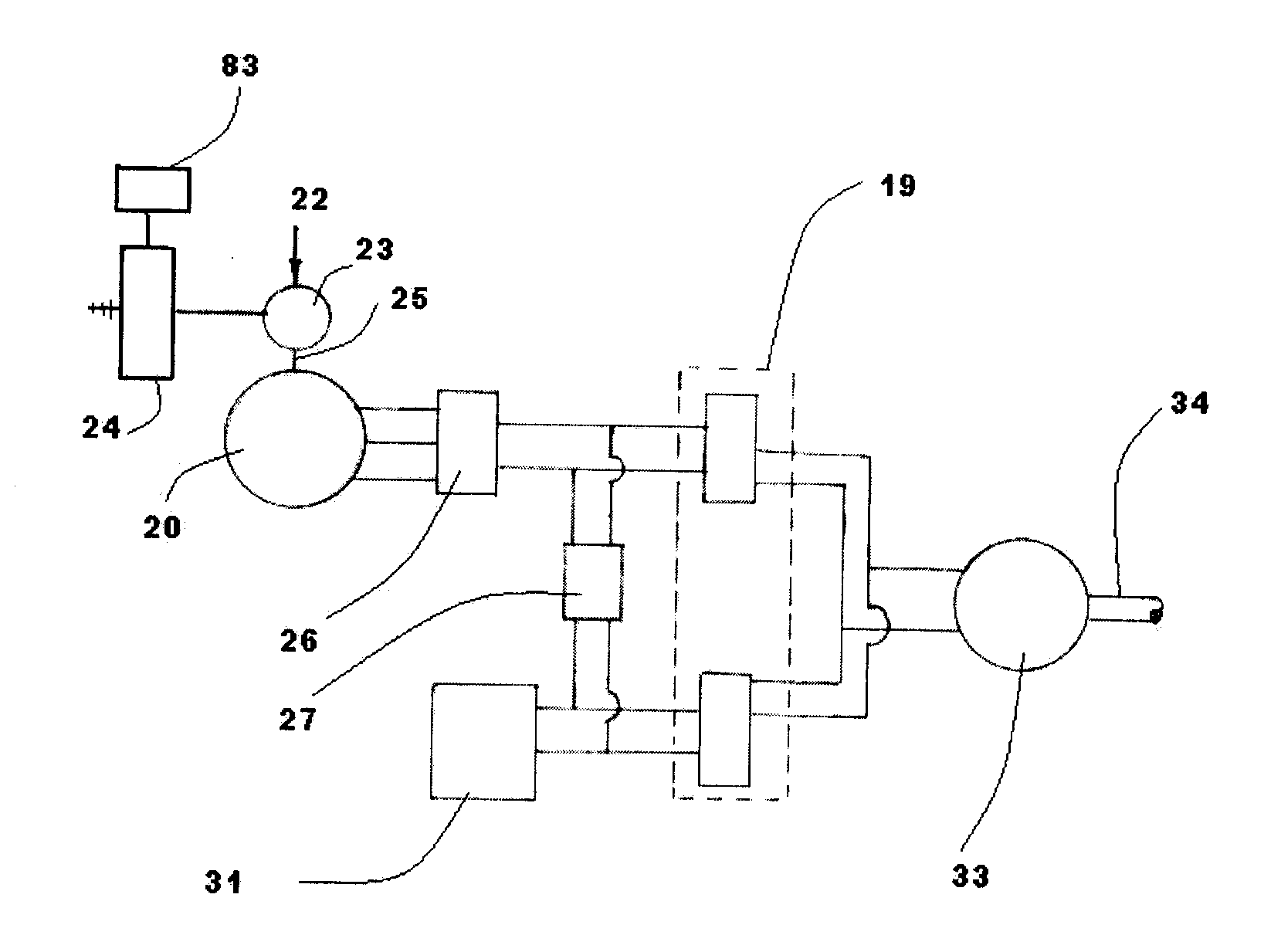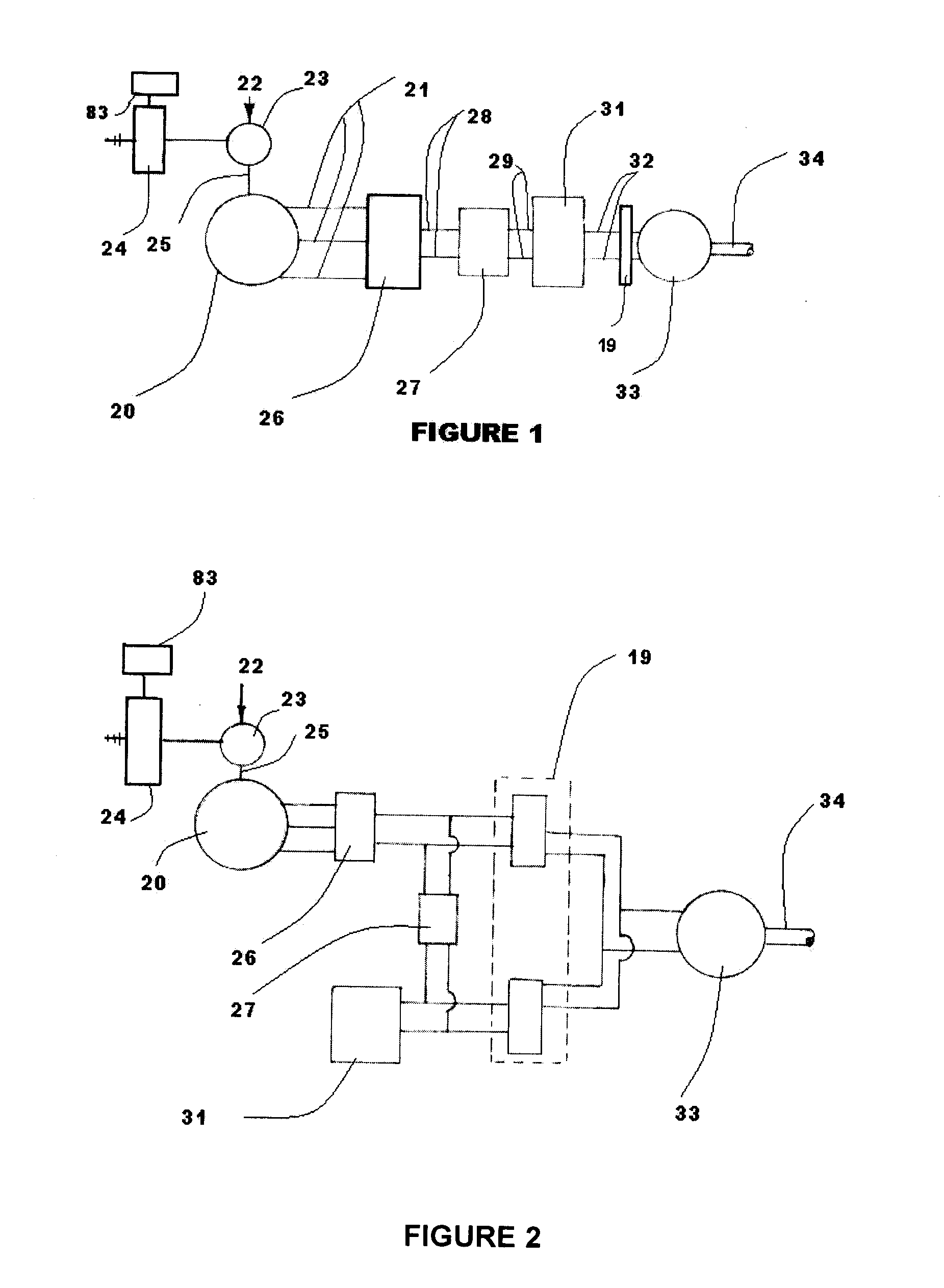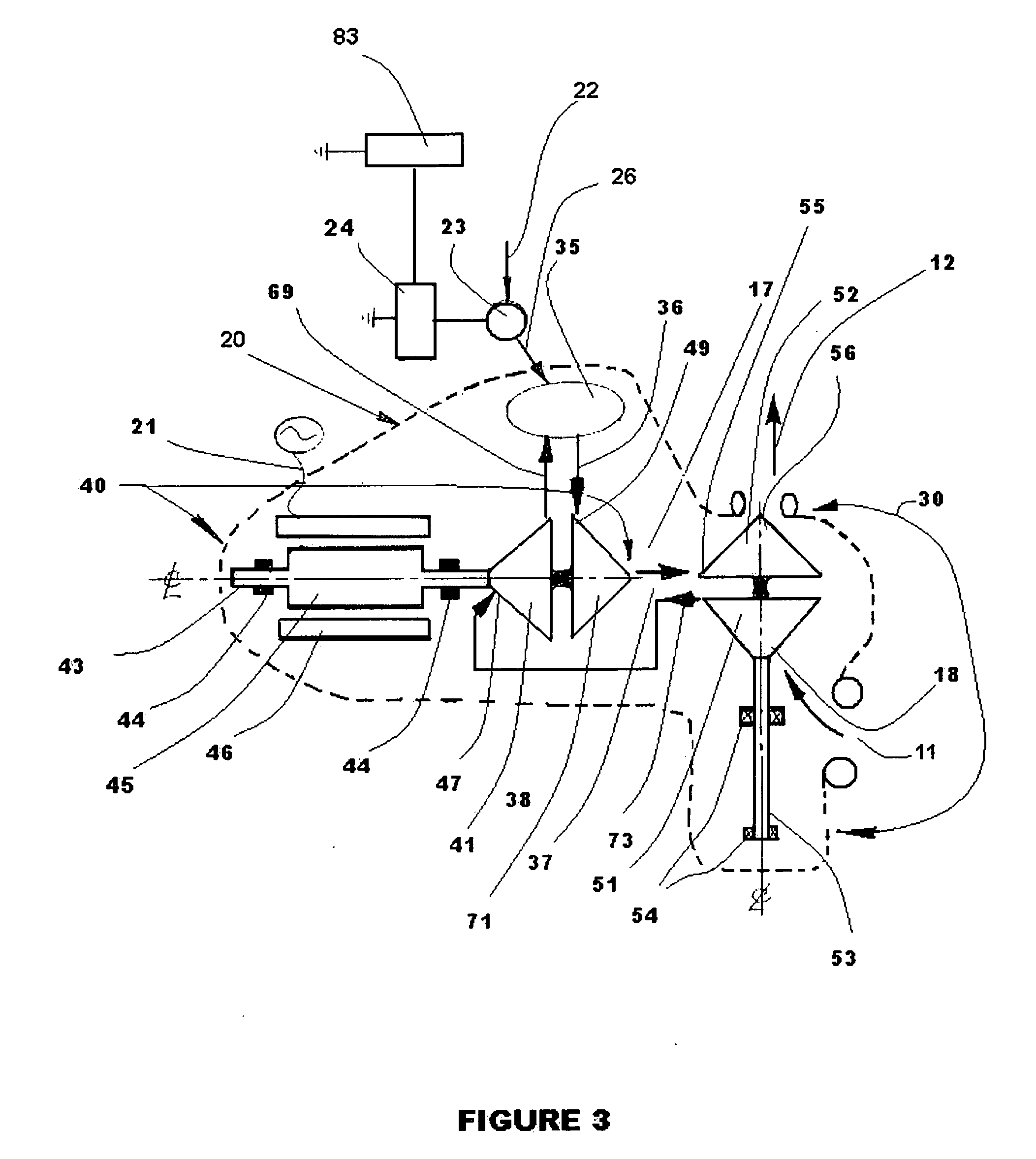Hybrid electric power for vehicular propulsion
a hybrid electric power and vehicular propulsion technology, applied in the direction of locomotive transmissions, electric motor propulsion transmissions, instruments, etc., can solve the problems of limited tin fuel use selection, exhaust emissions, and reduced cycle efficiency, so as to improve fuel use and extend the range
- Summary
- Abstract
- Description
- Claims
- Application Information
AI Technical Summary
Benefits of technology
Problems solved by technology
Method used
Image
Examples
Embodiment Construction
[0032]Turning now descriptively to the drawings, in which similar reference characters denote similar elements throughout the several view, the attached figures illustrate a HGT for vehicular propulsion, which comprises a HGT, Fuel Valve, EECU (electronic engine control unit), Throttle Box, Power Electronics, Battery Pack, Voltage Regulator, Electric Power Source Controller, Power Motor (with controller) and Differential. The HGT is a two spool gas turbine that generates electrical output power; the power output spool N2 integrated alternator rotor, compressor rotor and turbine rotor. An alternator stator is located co-axially about and in close proximity to the alternator rotor. The other spool N1, airflow producer, has a compressor rotor, turbine rotor an rotor shaft with bearings; is compressor / aero coupled to the power spool N2; housed within an engine body and has a combustion means for heat energy to drive the turbine rotors. The Fuel Valve is a electro-mechanical device that ...
PUM
 Login to View More
Login to View More Abstract
Description
Claims
Application Information
 Login to View More
Login to View More - R&D
- Intellectual Property
- Life Sciences
- Materials
- Tech Scout
- Unparalleled Data Quality
- Higher Quality Content
- 60% Fewer Hallucinations
Browse by: Latest US Patents, China's latest patents, Technical Efficacy Thesaurus, Application Domain, Technology Topic, Popular Technical Reports.
© 2025 PatSnap. All rights reserved.Legal|Privacy policy|Modern Slavery Act Transparency Statement|Sitemap|About US| Contact US: help@patsnap.com



